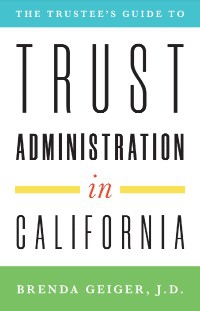Though it varies from case to case, depending on the make-up of the trust assets, how all of the assets were vested and the type of revocable trust, it’s typical for a trust administration to take about a year or little longer.

One of the first factors that can affect how long a trust administration will go on, is the make-up of the trust assets. For example, if the trust owns real estate, business interests, or is the beneficiary of a retirement account, the trust administration could take longer than a year. The reason is because the Trustee may need additional time to liquidate trust assets or because he or she may need to keep the trust administratively open in order to accept partial distributions over time from a retirement account for better tax treatment.
Another factor that could affect the amount of time it takes to conclude a trust administration is how the assets were vested or not vested to the trust prior to the death of the Grantor of the trust. Sometimes there are assets that flow into a trust after the death of a Grantor of a trust. For example, there may be an annuity, CD, bank, or investment account that names the trust as the beneficiary. In most cases, financial institutions won’t take that long to recognize the new Trustee in order to make that transfer to the trust when presented with the proper legal paperwork.
However, there are situations where there is not a proper beneficiary designation and the asset needs to be handled through a small estate Affidavit or a Probate court action. This could delay trust administration especially in the case of a Probate action. It’s important to note that having a validly executed Will that named the trust as the beneficiary in the event of a small estate or Probate action for one or more assets not vested to the trust is key. This is a vital part of most estate plans and is often referred to as a “pour-over Will”.
Of course, having all of the assets properly aligned with the trust, either through a beneficiary designation or by actually being vested to the trust before the death of the trust Grantor is the best approach. It will minimize estate administration delays and costs. And it will properly ensure the people or charities the Grantor intended to inherit the assets do so and in the way in which they were intended to inherit them.
Lastly, the type of revocable trust can affect how long it takes to proceed through a trust administration. For example, if a married couple has a joint revocable trust that leaves all of the assets to the survivor in a survivor’s trust, typically the trust administration is only a couple of months long. That is usually because there are administrative actions that need to happen in order to transfer all of the assets to the survivor’s trust, update the existing estate plan documents to remove the deceased spouse and administer life insurance policies and retirement accounts.
If the trust has more complexity to it say because the estate is larger, has multiple beneficiaries with competing interests or there is a blended family, the administration could take longer. Also, when we have an administration that occurs at the death of the second spouse or for a single person trust, there are legal formalities that must be followed, trust tax returns filed, an accounting performed (unless waived by all beneficiaries) and assets that need to be liquidated for or transferred to the beneficiaries either outright or in further trust.
Although there are some common themes in most trust administration cases, each trust administration is unique and different, and will require specific steps to settle. If you are the designated successor Trustee and need help administering a trust after a death in California, please feel free to reach out to our office to consult with us. Our intake department can be reached at (760) 448-2220. You can also reach us though our website contact page at https://www.geigerlawoffice.com/contact.cfm.
